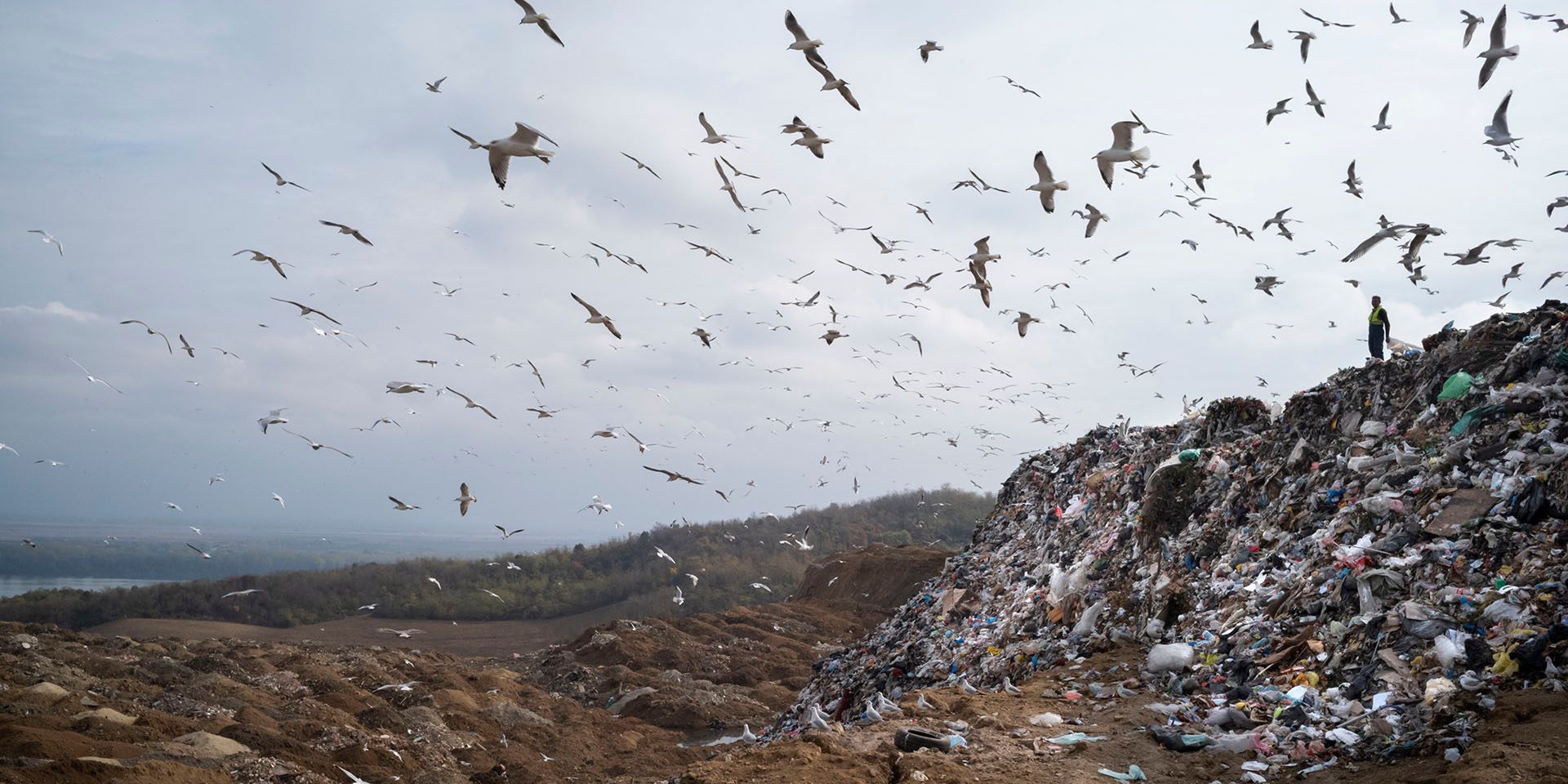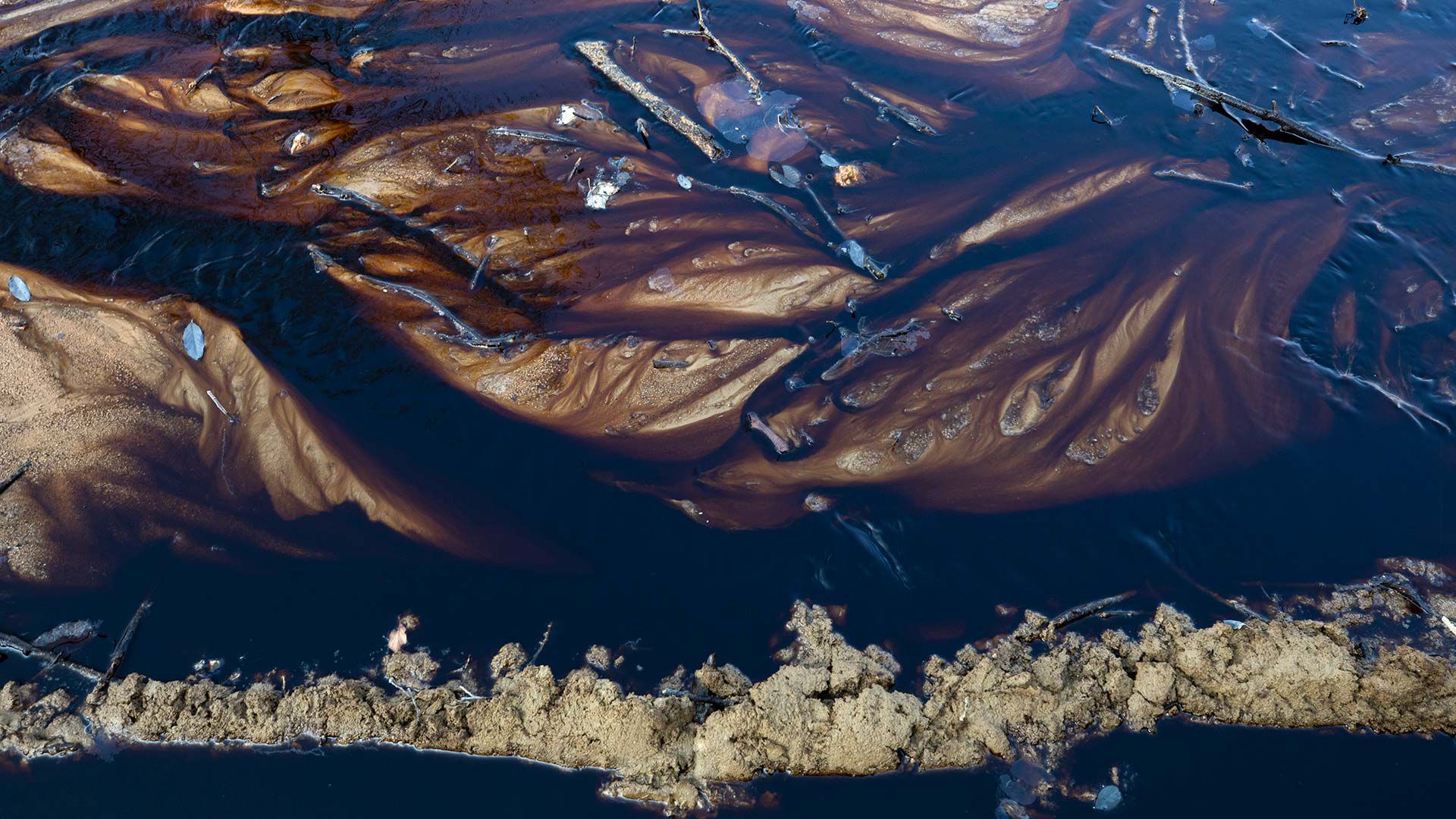By Melanie Mayhew
BELGRADE, Serbia—Water the color of ash trickles down a hillside, heading for an orchard of plum trees dotting the banks of the Danube.
The tiny waterfalls of black water that empty into Europe’s second-largest river pack a toxic punch: Pollutants are leaching from thousands of layers of trash—some as old as 1977, the year the city started dumping on the site. Environmental experts here say that because the dumpsite has never been properly managed, the water is highly polluted.
The Vinča landfill is the largest unmanaged open dump left in Europe. The landfill absorbs 600 truckloads of trash every day: 1,500 tons of household waste and 3,000 tons of construction waste. Despite taking up as much space as 185 European football fields, the landfill is running out of space to accommodate the new waste delivered daily.
And it is the site of an environmental disaster that is threatening to contaminate the water and air just 15 kilometers from the center of Belgrade.
“It’s the black spot as far as ecology is concerned, not only for Serbia, but for this part of Europe,” says Siniša Mali, the Minister of Finance for Serbia and the former Mayor of Belgrade.
Waste-pickers spend long days collecting recyclable material at the Vinča landfill in Belgrade, Serbia.
But that is about to change—and it is the result of more than half a decade of work, which started when the city of Belgrade and IFC signed a mandate to explore private sector solutions to Belgrade’s waste management problem to help the city avoid taking on more debt.
Serbia’s Largest Private-Sector Project
During four years of preparation, implemented in partnership with the governments of Austria, Canada, and Switzerland, as well as the Rockefeller Foundation, IFC helped the city develop a sustainable and balanced public-private partnership (PPP) contract and a transparent and competitive tender process, and improved the untested legal framework for PPPs.
Philippe Le Houérou, IFC’s CEO, highlighted the project in a note to staff, drawing attention to the amount of time the team spent to create the conditions for an investment—a process that IFC calls working Upstream.
“Belgrade’s modern waste-to-energy PPP is a perfect example of Upstream persistence: how we can deliver landmark projects when we commit the time and resources to creating, deepening, and expanding markets,” he wrote.
In 2018, the city awarded the PPP contract to the winning bidder, a consortium of private companies. The PPP became the first large-scale, bankable, private sector project in Serbian history—and in waste management in emerging markets, worldwide. It also demonstrated the robustness of the country’s new regulatory framework and its institutions, which is critical for Serbia to implement such partnerships on a large scale.
The investment came just in time. There is only one year of space left in the landfill, which has absorbed more than 10 million tons of waste in the last four decades. In some places, the trash towers higher than 70 meters.
“This was the very last moment for Belgrade to open a new landfill,” says Vladimir Milovanović, a Managing Director of Beo Čista Energija, a special-purpose vehicle formed by the private companies SUEZ, ITOCHU and Marguerite Fund II.
Experts project that with modern and sustainable approaches to waste management, the new Vinča landfill will last for 30 years.
In October 2019, a construction crew started building a new sanitary landfill, a waste-to-energy plant and a construction waste recycling unit compliant with applicable European Union specifications and standards. In three years, through the use of innovative technologies, the existing mountains of trash will become green space, and gas emanating from the trash that has piled up for decades will be collected to generate electricity. Future waste will be processed to generate heat and electricity. Workers also will collect and treat runoff water.
Vladimir Milovanović discusses plans to close the existing landfill and build and manage a new waste facility.
“Part of the waste that’s coming in is turned into a resource, rather than a burden,” says Thomas Lubeck, Regional Manager for Central and South East Europe at IFC. “The project intervenes at the end of the waste management chain though—the city and its citizens also have a role to play. Recycling rates must be increased in Belgrade, and in Serbia.”
The city has been installing separate collection bins throughout the city in the past few months and is encouraging citizens to recycle more.
“Citizens around the world need to change the way they think about waste, and it is happening now in Belgrade,” he adds.
A Ticking Time Bomb in Emerging Economies
Although waste management is a challenge across the world, it is a growing problem in places like Belgrade, as people move to the capital from the countryside. Belgrade is a city on the rise, but its lack of progress on environmental issues is holding it back.
The Belgrade project is a template for other emerging countries to follow, as they tackle the most intractable problems. Innovative solutions, like the one at the landfill in Belgrade, are turning ideas into reality.
“This model can be replicated in other emerging countries, in big cities, having the same kind of dumpsite without any treatment,” says Philippe Thiel, the Country Manager for SUEZ in Serbia and a Managing Director of Beo Čista Energija.
And, the project can show other countries how to address longstanding and pressing issues that they face.
“This PPP project was a good solution to solve infrastructure issues in an efficient way and minimize the impact on the [city’s] budget,” says Mitsuaki Harada, a General Manager at ITOCHU Europe and a Managing Director of Beo Čista Energija.
The project, which builds on IFC’s expertise developing inclusive, safe, resilient, and sustainable cities, has the power to guide other cities looking to solve pressing waste management challenges while leveraging the private sector.
In countries like Serbia, cleaning up their landfills also promises better air quality and uncontaminated rivers, paving the way for healthier, more sustainable, and more hopeful futures for their people.
Published in June 2020

